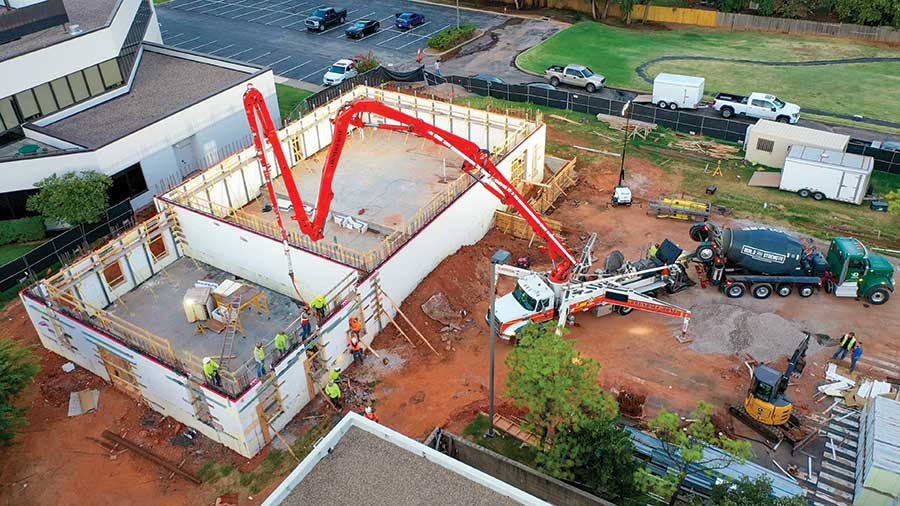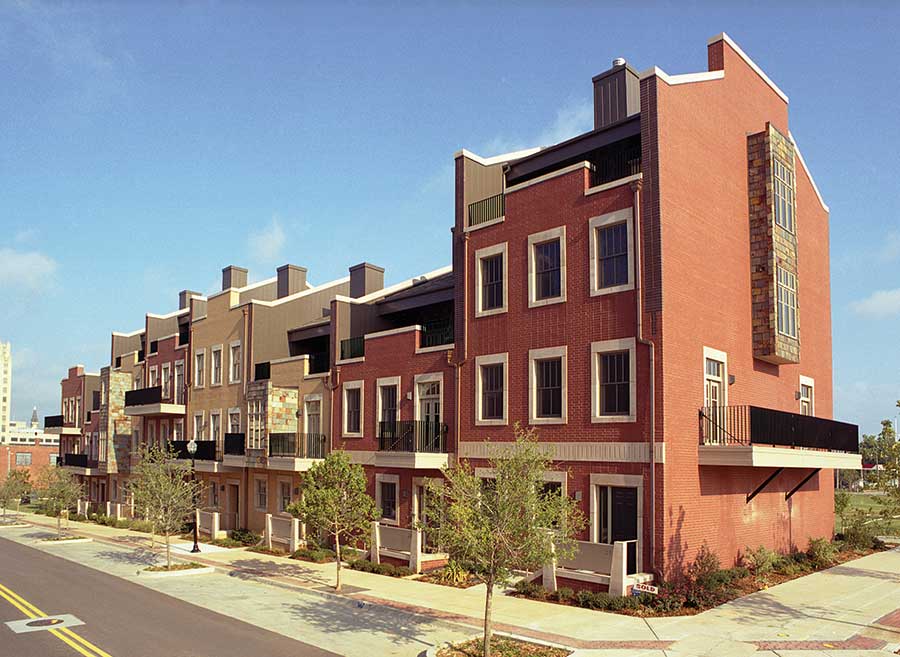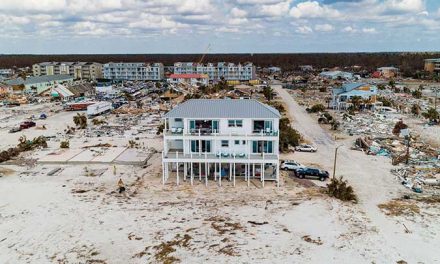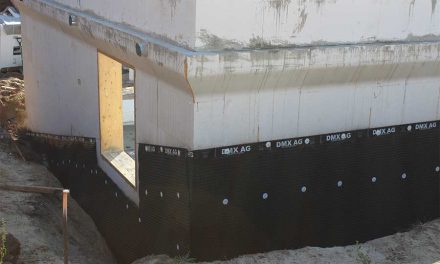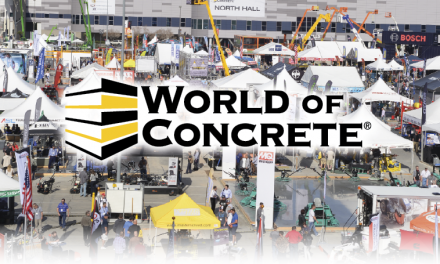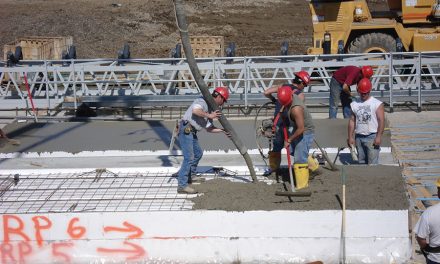By Frank Gordon, Assoc. AIA, VP of Strategic Development, BuildBlock Building Systems
In the face of increasing climate volatility and environmental concerns, the construction industry is undergoing a paradigm shift towards resilient and sustainable building practices. Surprisingly it’s a well-kept secret to the larger design and build community that Insulated Concrete Forms (ICFs) have emerged as a frontrunner in this movement, offering a combination of structural integrity, energy efficiency, and environmental sustainability not seen in almost any other exterior envelope system. What may not be widely known is that, through close examination, it becomes evident that ICFs not only offer resilience in the built environment but also contribute significantly to sustainable construction practices.
The Insulated Concrete Forms industry is well-positioned to meet the growing demand for resilient and sustainable construction solutions. By emphasizing the resilience and sustainability benefits of ICFs, supported by a comprehensive life cycle analysis, stakeholders can drive adoption and contribute to a more resilient and environmentally conscious built environment. Collaborative efforts led by organizations like the Portland Cement Association (PCA) and the National Ready Mixed Concrete Association (NRMCA) further enhance the industry’s sustainability credentials, reinforcing the position of ICFs as one of the most sustainable and resilient building methods available today.
Green Building Begins With The End In Mind
ICFs stand out for their exceptional resilience against natural disasters like hurricanes, tornadoes, wildfires, and earthquakes, making them one of the safest construction methods available. The combination of concrete strength and EPS foam panels provides superior protection, minimizing structural damage and ensuring occupant safety with utmost certainty, but I’m not stating something most of us don’t already understand. Moreover, ICF buildings boast remarkable energy efficiency, conservatively exhibiting up to 44%+ energy savings compared to traditional wood-framed structures. This not only slashes operational costs but also eases the strain on North America’s overloaded power grid. Reduced energy consumption further contributes to mitigating greenhouse gas emissions over the building’s lifespan. It’s imperative to widely promote ICF construction given its urgent significance in safeguarding lives, properties, and the environment.
Starting At The Source
A cradle-to-grave life cycle analysis from resource extraction (the “cradle”) to the use and the disposal phase (i.e., the “grave”), ICFs demonstrate significant sustainability advantages over other construction methods. The PCA, the NRMCA, and MIT’s Concrete Sustainability Hub have spearheaded efforts to lower the embodied carbon footprint of ready mixed concrete. And through advancements in concrete production techniques and materials, these organizations have made significant contributions to reducing the environmental impact of concrete and aligning this industry with global sustainability goals. These are all advantages to the ICF industry, and they should be embraced as such when we tout the inherent advantages of building with ICF. We have a great story to tell. My question is, why aren’t we better about communicating it?
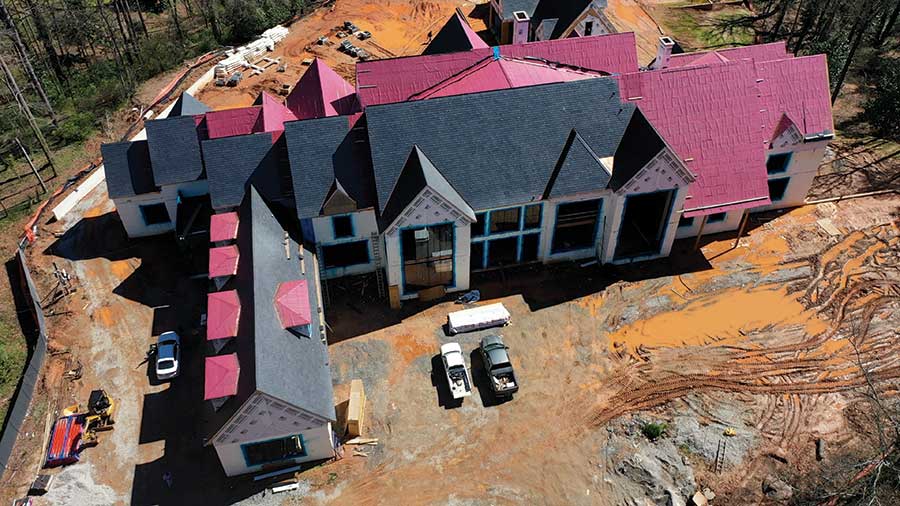
ICFs can be used for a wide variety of projects, from light commercial to multifamily and large luxury residential.
What’s In The Middle Matters
Over the last decade, the ready mixed concrete industry has reduced its embodied carbon footprint by over 22%. No other industry can claim such change when it comes to reducing embodied carbon. None. And when ICF walls are compared to wood-framed walls or rigid steel-framed structures, they offer superior sustainability attributes. Wood production is associated with deforestation and habitat destruction, leading to biodiversity loss and carbon emissions. In contrast, concrete production emits significantly lower levels of carbon dioxide per ton compared to steel production, making it the more environmentally friendly choice. For reference, these are third-party verified percentages of the global carbon footprint of each major material industry: Concrete (8%), Wood (10%), and Steel (11%). Additionally, the durability of ICFs ensures longer building lifespans, reducing the need for frequent replacements and minimizing construction waste. We have a great story to tell.
In my two decades working in the ICF industry, I’ve witnessed its fluctuations and challenges firsthand. During the 2008-2010 economic downturn, many blocks vanished from the market. Currently, the industry has consolidated around a core group of North American manufacturers and a few regional producers. Our greatest weakness is our tendency to compete against each other rather than unite to promote the benefits of ICF over wood or steel.
The Only Way Up Is Through, Together
We possess a distinct advantage in the low to mid-rise market, yet we fail to capitalize on it. We have abundant educational resources, industry awareness campaigns, and PR opportunities at our disposal; why do we not leverage them to showcase ICF’s superiority, especially in commercial construction? The Insulating Concrete Manufacturers Association (ICFMA) has worked together for nearly 10 years, adding members and collaborating on promotion partnerships with stakeholders such as the NRMCA, PCA, the MIT Concrete Sustainability Hub as well as this publication and others to ensure code compliance, performance testing, prescriptive engineering, and other meaningful tools to emphasize the true resilience and green building advantages of ICFs. The time for more is now.
We urgently need to rally architects, engineers, contractors, and developers to understand the superiority of the ICF exterior building envelope. This isn’t a task for a select few; it demands the combined effort of every stakeholder who has benefited from Insulated Concrete Forms. We can’t afford to sit back while traditional materials like wood or steel dominate. It’s our moment to unite and amplify our message. We can’t rely solely on industry organizations; each of us must act. Our solution offers unparalleled value in low to mid-rise construction across various building types, and it’s time we start acting like it. The stakes are high, and if we hesitate, we risk missing out on crucial opportunities. It’s time to step up, equip advocates with the knowledge and tools, unite as an industry, and lead this charge with urgency.
True green building and design with a sizable portion of resilience, significant energy efficiency, improved comfort, and enhanced security should become the norm, not the exception.
Resources
Smith, J., & Johnson, A. (2021). “Resilience of Insulated Concrete Forms in Hurricane-Prone Regions.” Journal of Structural Engineering, 47(3), 321-335.
Green, S., et al. (2019). “Energy Efficiency of Insulated Concrete Forms in Residential Buildings: A Comparative Analysis.” Energy and Buildings, 82(4), 167-175.
Sustainable Building Council. (2020). “Life Cycle Analysis of Building Materials: A Comprehensive Review.” Sustainable Construction Journal, 15(2), 101-118.
Portland Cement Association. (2018). “Advancements in Reducing the Embodied Carbon Footprint of Ready Mixed Concrete.” Concrete Sustainability Report, 25(1), 45-58.
Environmental Defense Fund. (2017). “Environmental Impacts of Wood Production: A Comprehensive Assessment.” Environmental Science Journal, 30(4), 213-227.
World Steel Association. (2021). “Carbon Footprint of Steel Production: Global Trends and Challenges.” Steel Sustainability Review, 38(2), 75-89.
Construction Waste Management Association. (2019). “Minimizing Construction Waste through Durable Building Materials.” Construction Sustainability Report, 12(3), 56-68.

